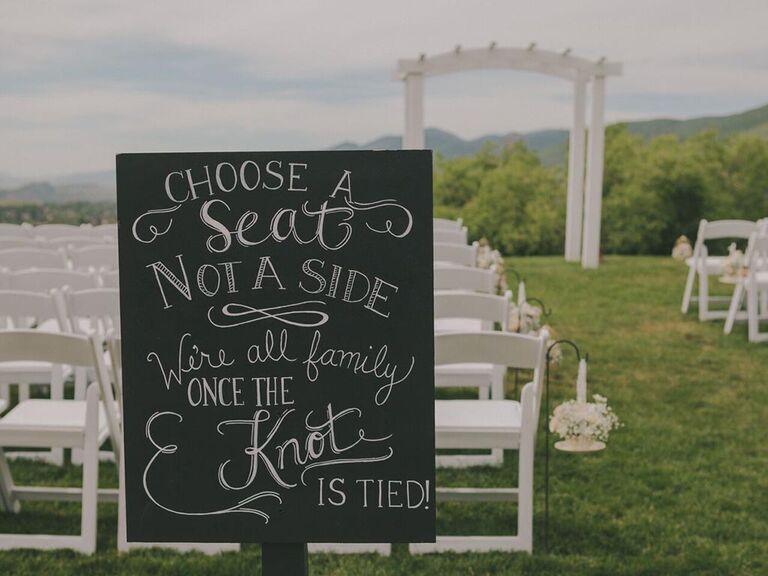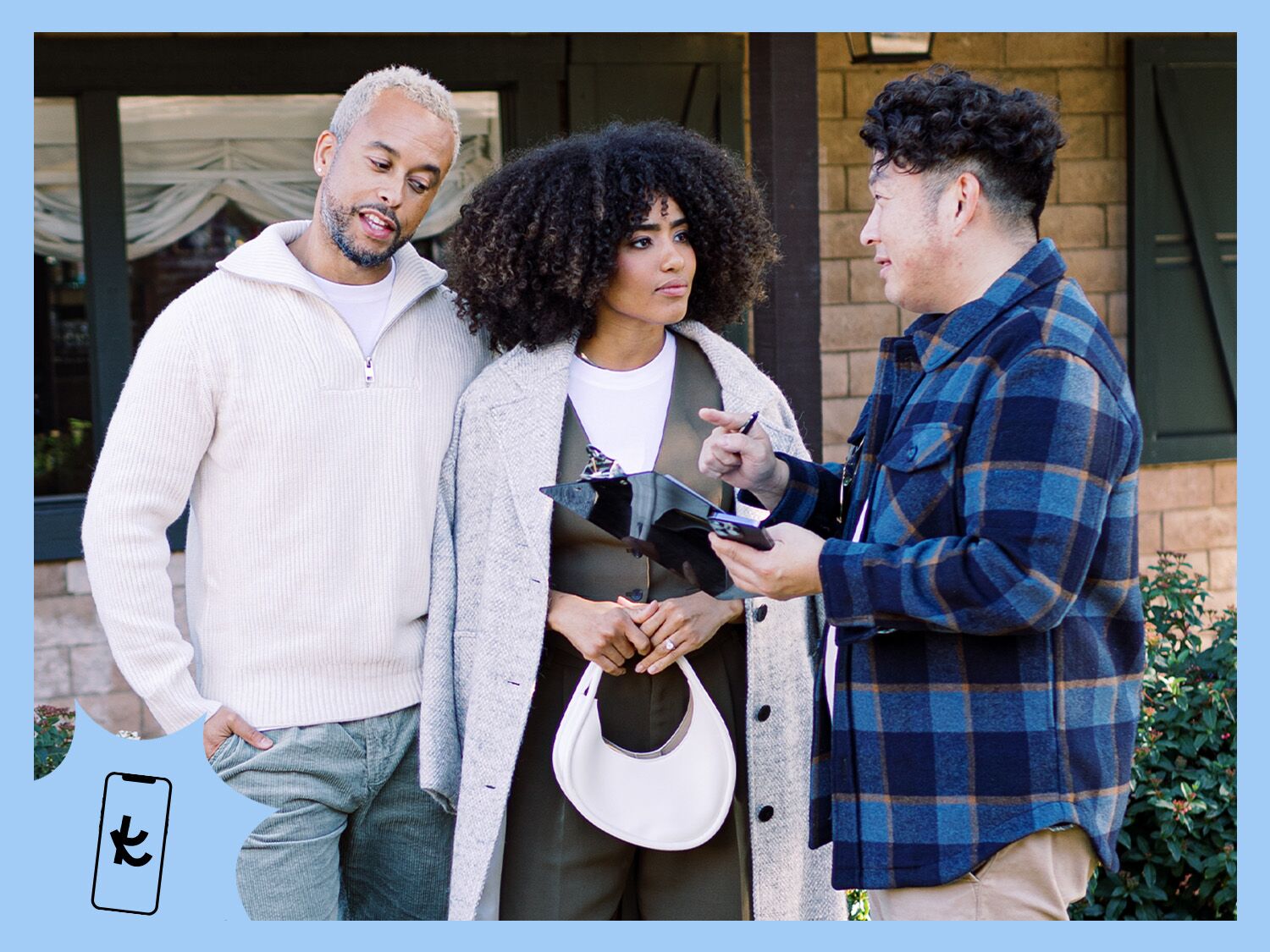Got a Lopsided Guest List? Here's Exactly What To Do
Learning how to create a wedding guest list is no easy feat in and of itself. And when you and your partner have an uneven number of guests—meaning you have a lopsided wedding guest list—it can get even trickier to manage. To help with wedding guest list etiquette, we chatted with a couple of wedding planning experts. Keep reading to learn the etiquette behind a lopsided wedding guest list, how to handle it, and tips on communicating with your partner through the planning process.
In this article:
- Should Both Partners Have Equal Guest Lists?
- How to Divide a Wedding Guest List
- How to Handle a Lopsided Wedding Guest List
- How to Communicate Concerns About a Lopsided Wedding Guest List
Should Both Partners Have Equal Guest Lists?
The short answer: Nope! Sure, having an equal number of guests per partner would make some aspects of wedding planning easier. But, for some couples, the guest list may end up being uneven and that's okay. Jamie Chang, owner and destination wedding planner of Mango Muse Events, says it's not unusual for one partner to have more family or friends than the other. Her advice? "Embrace it," she says. Nora Sheils, founder of Bridal Bliss, agrees with this advice and adds, "It's perfectly acceptable to throw out the rule book" when it comes to all aspects of the big day, including the guest list.
How to Divide a Wedding Guest List
If you're stressing out about dividing your wedding guest list perfectly in half, consider this your permission slip to let that go. Chang notes that the ratio of guests per partner doesn't matter as much as the total number of guests. Here's why: "Weddings are expensive, and every guest has a dollar amount attached," Sheils says. "In building your guest list, ensure you invite guests that would mean the most to you to be there." In other words, be picky. At the end of the day, Chang adds that the most important thing is that both partners feel comfortable with the guest list (regardless of ratio) and the total number of guests.
How to Handle a Lopsided Wedding Guest List
If you have a lopsided wedding guest list, which, again, is totally fine. Here are some expert tips on how to handle the logistics of it.
Get creative with seating.
Sheils suggests having open seating as an easy way to manage the logistics of an uneven guest count. (Pro tip: She adds that assigning an attendant to help with seating can ensure this goes smoothly.) This way, there's no headache around how to organize a wedding guest list and decide who will sit where. Alternatively, Sheils suggests combining different table sizes for dining, making it easier to fit all guests evenly throughout the space.
Keep the toasts even.
"One area you don't want your lopsided guest list to affect is toasts," Chang says. "Just because one partner has more guests does not mean they should have more people speaking. Keeping these numbers even—or close to even—is a good way to ensure both partners feel represented and loved." If there are additional people that one partner would love to deliver a toast, she recommends scheduling them to speak during other wedding-related events, such as the wedding shower or rehearsal dinner.
Ensure all guests are treated equally.
Whether it's an even or lopsided wedding guest list, above all else, Chang says the most important wedding etiquette for inviting guests is that both families and friends are treated equally. "This means the person with more guests can't have all their guests reserved seats or at tables close to the couple," she says. "Spacing both sides evenly to start and then filling the rest in with the additional guests makes sure both sides are treated the same and are situated accordingly."
Trim down the guest list.
If there is a significant difference in the guest list, Sheils recommends cutting down your wedding guest list so it feels more fairly distributed and avoid overwhelming the other partner. If you're having trouble whittling the list down, Chang advises setting up "rules" that make sense for you and your partner. For example, one rule could be that all guests have met both partners and know them well or only invite people that one of you has a close relationship with. "This makes it fair, not necessarily in numbers, but in relationships," Chang says. "And it ensures that everyone there is someone who is a big part of your life."
Yes, this may require telling people they aren't invited to the wedding but it's one of the best ways to make a wedding guest list that feels good for both partners. Plus, trimming down the guest list is a great way to save money on your wedding budget.
How to Communicate Concerns About a Lopsided Wedding Guest List
Communication between partners throughout the wedding planning process is key, but it can be challenging to address the topic and express how you feel about it when it comes to touchy subjects such as a lopsided wedding guest list. For example, the partner with the shorter guest list may fear they will feel like a stranger at their wedding. "A partner who has fewer guests at a wedding can feel both unrepresented and unknown, where they feel like they look into the crowd and don't know the people there," Chang says.
So how do you communicate your concerns about a lopsided wedding guest list with your partner and avoid fighting over the wedding guest list? Be open and honest, Sheils says. "Explain your concerns," Chang adds. Once it's all out in the open, Chang says only then can you come up with a solution together that works for both of you.
Sometimes, the solution may be to go back to the drawing board and trim down the guest list so it feels more even and both partners feel surrounded by loved ones at the wedding. Or, if one partner is overwhelmed with meeting so many of their significant other's friends and family members for the first time all in one day, Sheils says it could be helpful to come up with a plan to manage that, like spacing out the introductions throughout the day.
One last piece of advice: "Your wedding day is about celebrating your love for each other, not about impressing your guests," Sheils says. "So, prioritize what feels right for you and your partner to ensure that everyone has an enjoyable experience."
























